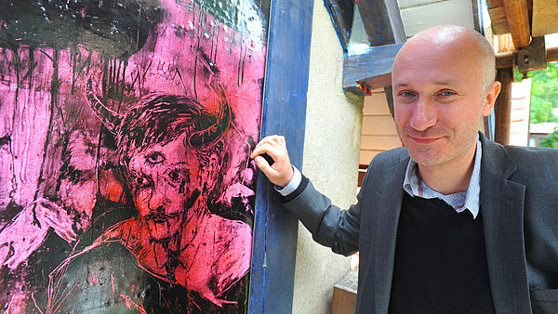
The garden of Jurkovič's villa in Brno has returned close to its original form
 |
Brno - The garden of the rare Jurkovič villa in Brno has returned close to the form it was given by architect Dušan Jurkovič after more than 100 years. The restoration of the garden according to the original plan discovered in the archive is part of the overall reconstruction of the villa. The garden is dominated by roses and other ornamental plants, but, for example, grapevines are also present. Lenka Vodičková from the Moravian Gallery, which manages the villa, told ČTK today.
The building, which Jurkovič originally designed for his own needs, has been inhabited by private individuals for many decades. Although the villa itself has been preserved from irreversible interventions, the garden has changed significantly. During the restoration, part of the trees were removed, while newly adjusted paths and benches were added.
A notable feature of the garden will be the roses, along with flower beds with other plants. "It is a mix of perennials that bloom from spring to autumn, there are ferns, flowering perennials both in flower and leaf. On the edges of the property, there are the useful parts of the garden, where, for example, grapevines and currants can be found," said Vodičková.
Scaffolding has recently been removed from the villa, allowing passersby to once again see the facade. Some may be surprised that it looks similar at first glance to how it did before the renovation. "That was the intention. It is very valuable, only in some places it has been restored, various wooden elements were newly crafted in the original colors, and the windows were painted," Vodičková stated.
Craftsmen have already completely moved into the interiors of the Jurkovič villa. The Moravian Gallery plans to open the building in spring 2011. It will be part of the celebration of the 50th anniversary of the founding of the Moravian Gallery.
A new feature is the glass artwork by Josef Bolf on the facade of the villa. The Jurkovič villa was originally adorned with a glass mosaic by Adolf Kašpar, a painter and graphic artist known for his illustrations for Božena Němcová's Grandma. The mosaic depicted a scene from the fairy tale Bača and the Dragon, but it has not survived. It likely disappeared during World War I. Art historians do not have detailed plans or quality photographic documentation, only a sketch. Therefore, the gallery abandoned the production of an inauthentic copy and decided on a work by a contemporary artist. It approached several visual artists and eventually chose Bolf's work executed in typically dark tones.
The English translation is powered by AI tool. Switch to Czech to view the original text source.
0 comments
add comment
Related articles
0
24.03.2011 | Jurkovič's villa will offer visitors a study room with 1200 documents
1
27.05.2009 | The reconstruction of Jurkovič's villa begins
0
18.09.2007 | Repairs of Jurkovič's Villa are being postponed, they will probably start next year
0
06.04.2007 | Jurkovič's villa in Brno will be repaired and accessible next year












